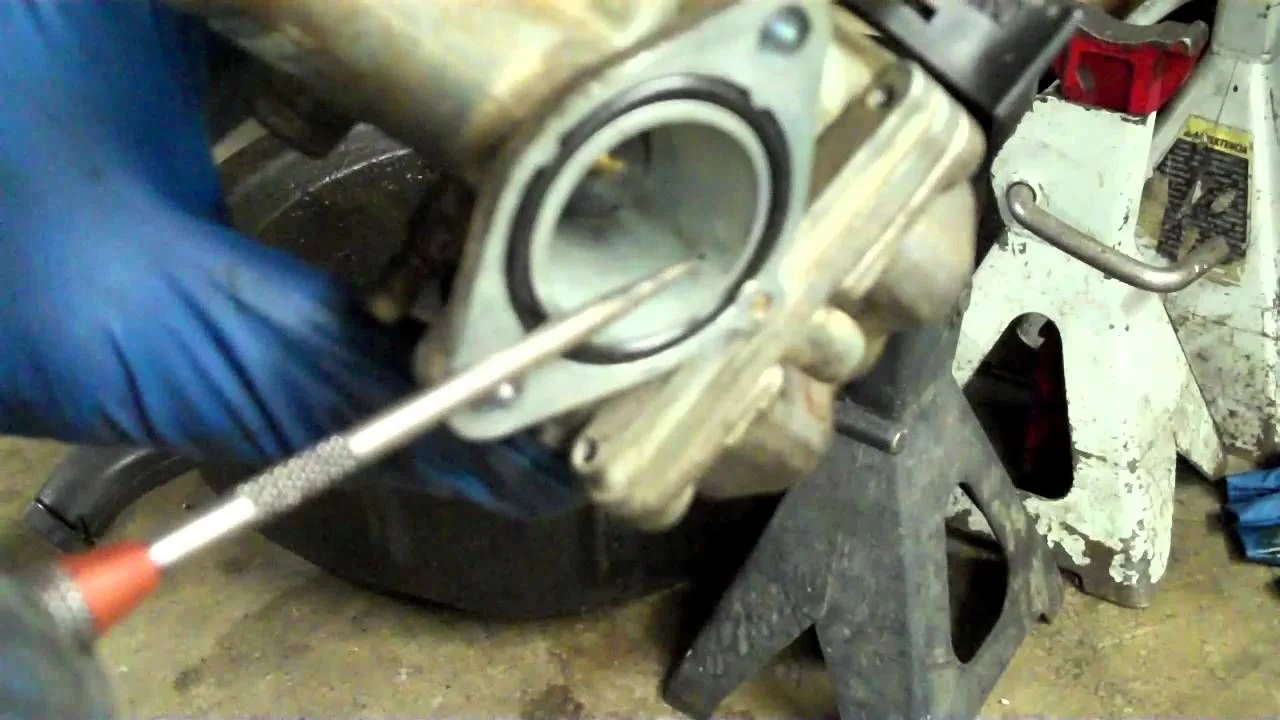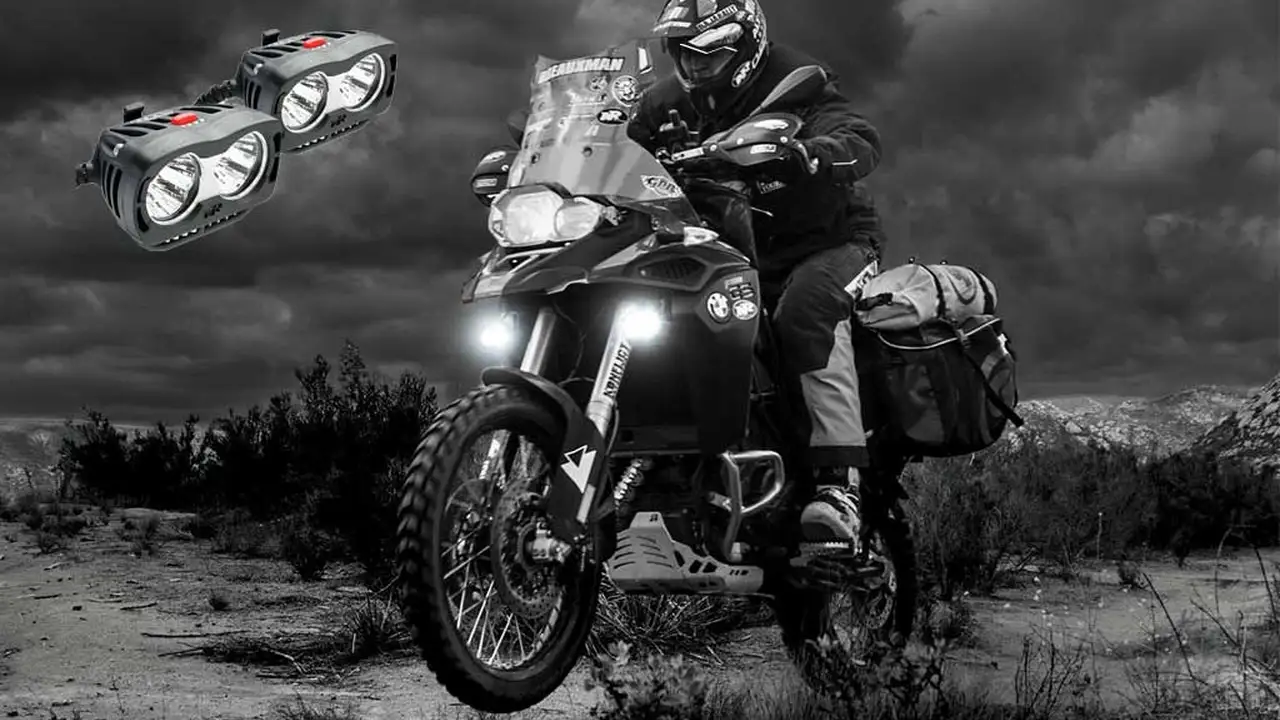ADV Motorcycle Carburetor Cleaning and Tuning
Motorcycle carburetors, especially on adventure (ADV) bikes, can get gunked up from dirt, dust, and old fuel, leading to poor performance. Cleaning and tuning your carb is essential for maintaining optimal engine health, fuel efficiency, and throttle response on your ADV machine. This guide will walk you through the process, offering practical tips and specific product recommendations to keep your carb clean and your bike running smoothly. Let's dive into the world of carburetors and how to keep them in top shape.

Alright, let's talk carburetors! On an adventure bike, your carb is constantly battling the elements. Dust, mud, water crossings – it all takes a toll. A dirty carb can lead to a whole host of problems, from poor idling and stalling to a significant drop in fuel economy and performance. This isn't just about bragging rights; it's about reliability when you're miles from nowhere.
Understanding Your ADV Motorcycle Carburetor: A Quick Overview
Before we start tearing things apart, let's get a basic understanding of what a carburetor does. In simple terms, it mixes air and fuel in the right proportions to create a combustible mixture for your engine. It achieves this through a series of jets, needles, and passages that are precisely calibrated. When these components get clogged or worn, the mixture goes out of whack, causing all sorts of issues.
Think of it like this: your carb is the chef, precisely measuring and combining ingredients for the perfect recipe (combustion). If the chef's measuring spoons are dirty or the ingredients are off, the dish (engine performance) will suffer.
Gathering Your Carburetor Cleaning and Tuning Tools and Supplies
You'll need a few essential tools and supplies before you start. This will prevent frustrating mid-job runs to the hardware store.
- Carburetor Cleaner: This is a must-have. Look for a spray cleaner specifically designed for carburetors.
- Compressed Air: A can of compressed air or an air compressor is crucial for blowing out jets and passages.
- Small Cleaning Brushes: Carburetor cleaning brushes or small wire brushes are helpful for scrubbing away stubborn deposits.
- Screwdrivers: You'll need a variety of screwdrivers (Phillips and flathead) to disassemble the carburetor.
- Pliers: Pliers are useful for removing hoses and other small parts.
- Jet Removal Tool: Some carburetors have jets that require a special tool for removal.
- New O-rings and Gaskets: It's always a good idea to replace O-rings and gaskets during a carb cleaning to prevent leaks.
- Shop Rags: Plenty of shop rags to wipe up spills and keep your workspace clean.
- Carburetor Dip (Optional): For heavily soiled carbs, a carburetor dip solution can be very effective.
- Protective Gear: Wear gloves and eye protection when working with carburetor cleaner.
Step-by-Step ADV Motorcycle Carburetor Cleaning Procedure
Okay, let's get down to business. Here's a step-by-step guide to cleaning your carburetor:
- Remove the Carburetor: This will vary depending on your bike model. Consult your service manual for specific instructions. Generally, you'll need to disconnect the fuel line, throttle cables, and any other connections to the carburetor.
- Disassemble the Carburetor: Carefully disassemble the carburetor, paying attention to the order of the parts. Take pictures as you go – this will be invaluable when reassembling!
- Clean the Carburetor Body: Spray the carburetor body with carburetor cleaner and use a brush to scrub away any dirt or deposits.
- Clean the Jets and Passages: Remove the jets and soak them in carburetor cleaner. Use a small wire or carburetor cleaning brush to clean out the passages. Blow out the jets and passages with compressed air. This is crucial! Clogged jets are the most common cause of carburetor problems.
- Clean the Float Bowl: Clean the float bowl thoroughly, removing any sediment or debris.
- Inspect and Replace O-rings and Gaskets: Replace any worn or damaged O-rings and gaskets.
- Reassemble the Carburetor: Carefully reassemble the carburetor, referring to your pictures or service manual.
- Reinstall the Carburetor: Reinstall the carburetor on your bike, reconnecting the fuel line, throttle cables, and other connections.
ADV Motorcycle Carburetor Tuning: Getting the Air/Fuel Mixture Right
Cleaning is only half the battle. Once your carb is clean, you need to tune it to ensure the correct air/fuel mixture. A lean mixture (too much air, not enough fuel) can cause overheating and engine damage. A rich mixture (too much fuel, not enough air) can cause poor fuel economy and a sluggish throttle response.
Here's how to adjust the air/fuel mixture:
- Locate the Air/Fuel Mixture Screw: This screw is usually located on the side of the carburetor. Consult your service manual for the exact location.
- Start the Engine: Warm up the engine to operating temperature.
- Adjust the Mixture Screw: Turn the mixture screw in or out until the engine idles smoothly. You may need to experiment to find the sweet spot. A good starting point is usually 1.5 to 2.5 turns out from fully seated.
- Fine-Tune the Idle Speed: Adjust the idle speed screw to achieve the desired idle speed.
Recommended Carburetor Cleaning Products for ADV Motorcycles: A Comparative Review
Choosing the right products can make a big difference in the effectiveness and ease of your carburetor cleaning. Here are a few recommendations:
- Berryman Chem-Dip Carburetor and Parts Cleaner: This is a powerful dip cleaner that's great for heavily soiled carburetors. Pros: Highly effective at removing stubborn deposits. Cons: Requires soaking the carburetor for an extended period. Price: Around $30 per gallon. Use case: Ideal for carburetors that have been neglected or are heavily corroded.
- CRC Carb & Choke Cleaner: A popular spray cleaner that's easy to use and effective for general cleaning. Pros: Convenient spray application, good for routine maintenance. Cons: Not as powerful as dip cleaners. Price: Around $10 per can. Use case: Good for regular carb cleaning and maintenance.
- Sea Foam Motor Treatment: This can be added to your fuel to help keep your carburetor clean and prevent deposits from forming. Pros: Easy to use, helps prevent future buildup. Cons: Not a substitute for a thorough cleaning. Price: Around $10 per can. Use case: Use as a fuel additive for ongoing carburetor maintenance.
- Yamalube Carburetor Cleaner: Designed specifically for Yamaha carburetors, but works well on other brands too. Pros: Reliable, good for Yamaha bikes. Cons: Can be more expensive than other brands. Price: Around $15 per can. Use case: Best for Yamaha ADV bikes, but suitable for general carb cleaning.
When choosing a cleaner, consider the condition of your carburetor and your budget. For routine maintenance, a spray cleaner like CRC Carb & Choke Cleaner is a good choice. For heavily soiled carbs, Berryman Chem-Dip Carburetor and Parts Cleaner might be necessary.
Troubleshooting Common ADV Motorcycle Carburetor Problems: Symptoms and Solutions
Here are some common carburetor problems and how to fix them:
- Engine Stalling at Idle: This could be caused by a clogged idle jet or an improperly adjusted air/fuel mixture screw. Clean the idle jet and adjust the mixture screw.
- Poor Fuel Economy: This could be caused by a rich mixture or a clogged air filter. Adjust the mixture screw and replace the air filter.
- Hesitation on Acceleration: This could be caused by a clogged main jet or a lean mixture. Clean the main jet and adjust the mixture screw.
- Engine Surging: This could be caused by a vacuum leak or a faulty accelerator pump. Check for vacuum leaks and inspect the accelerator pump.
Preventive Maintenance for Your ADV Motorcycle Carburetor: Keeping it Clean
The best way to avoid carburetor problems is to practice preventive maintenance. Here are a few tips:
- Use High-Quality Fuel: Avoid using fuel that contains ethanol, as it can damage carburetor components.
- Add Fuel Stabilizer: If you're storing your bike for an extended period, add fuel stabilizer to prevent fuel from breaking down and clogging the carburetor.
- Clean Your Air Filter Regularly: A dirty air filter can restrict airflow and cause the carburetor to run rich.
- Inspect Your Fuel Lines: Check your fuel lines for cracks or leaks and replace them as needed.
Specific Product Recommendations and Usage Scenarios for ADV Carburetors
Let's dive deeper into specific product recommendations and how they fit into different ADV riding scenarios:
- Scenario 1: Prepping for a Long Overland Trip: Before embarking on a multi-day or multi-week adventure, a thorough carburetor cleaning is essential. Use Berryman Chem-Dip for a deep clean, followed by CRC Carb & Choke Cleaner for spot cleaning. Replace all O-rings and gaskets with a high-quality kit like a Keyster Carburetor Repair Kit (price varies by bike model, typically $20-$50). This ensures a reliable and leak-free carb.
- Scenario 2: Quick Trailside Fix: Carrying a can of CRC Carb & Choke Cleaner and a small set of carburetor cleaning brushes is invaluable for addressing minor clogs on the trail. These can often dislodge debris and get you back on the road. Consider a Motion Pro Carburetor Cleaning Tool Set ($15-$25) for a compact and effective solution.
- Scenario 3: Regular Maintenance for Weekend Warriors: For riders who frequently hit the trails, using Sea Foam Motor Treatment in every tank of fuel can help prevent buildup and maintain optimal carburetor performance. Supplement this with a spray cleaning every few months.
- Scenario 4: Addressing Ethanol Damage: If you suspect ethanol damage, consider using a fuel system cleaner specifically designed to combat ethanol-related issues, such as Star Tron Enzyme Fuel Treatment ($10-$15). This can help dissolve deposits and protect your fuel system.
Comparing Carburetor Cleaning Methods: Dip vs. Spray
Choosing between a dip cleaner and a spray cleaner depends on the severity of the carburetor's condition and your personal preference.
- Dip Cleaners: These are more powerful and effective for heavily soiled carburetors. They require soaking the carburetor for an extended period, which can be time-consuming. They are also more aggressive and can damage certain carburetor components if not used carefully.
- Spray Cleaners: These are easier to use and good for routine maintenance. They are less powerful than dip cleaners, but they are also less likely to damage carburetor components. They are a good choice for riders who clean their carburetors regularly.
Think of it like deep cleaning your house versus a quick tidy-up. Dip cleaners are the deep clean, while spray cleaners are the quick tidy-up.
Advanced Carburetor Tuning Techniques for ADV Motorcycles: Beyond the Basics
Once you've mastered the basics of carburetor cleaning and tuning, you can explore more advanced techniques to fine-tune your bike's performance.
- Jetting for Altitude: If you frequently ride at different altitudes, you may need to adjust your carburetor jetting to compensate for changes in air density. Higher altitudes require leaner jetting.
- Using a Wideband O2 Sensor: A wideband O2 sensor can provide real-time feedback on your air/fuel ratio, allowing you to fine-tune your carburetor for optimal performance.
- Dyno Tuning: Dyno tuning involves using a dynamometer to measure your engine's power output at different RPMs. This allows you to optimize your carburetor settings for maximum performance.
The Importance of a Clean Air Filter for Carburetor Performance
A clean air filter is crucial for maintaining optimal carburetor performance. A dirty air filter restricts airflow, causing the carburetor to run rich. This can lead to poor fuel economy, reduced power, and engine damage. Clean or replace your air filter regularly, especially if you ride in dusty conditions.
Think of your air filter as your carb's lungs. If the lungs are clogged, the carb can't breathe properly.
Final Thoughts: Keeping Your ADV Carburetor Happy
Cleaning and tuning your ADV motorcycle carburetor is a rewarding task that can significantly improve your bike's performance and reliability. By following these tips and using the right products, you can keep your carburetor in top shape and enjoy many miles of trouble-free riding. Don't be intimidated by the process. Take your time, be methodical, and remember to take pictures as you disassemble the carburetor. With a little practice, you'll become a carburetor cleaning pro!
:max_bytes(150000):strip_icc()/277019-baked-pork-chops-with-cream-of-mushroom-soup-DDMFS-beauty-4x3-BG-7505-5762b731cf30447d9cbbbbbf387beafa.jpg)






